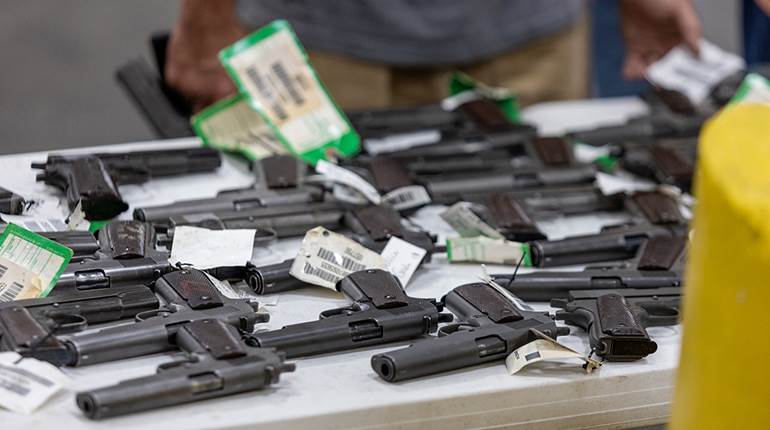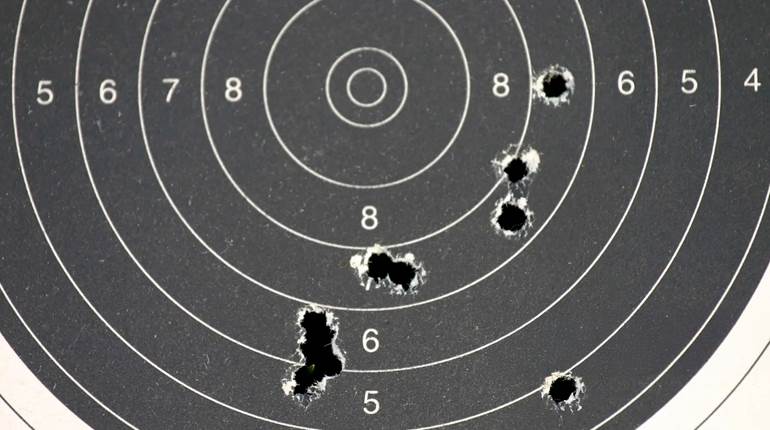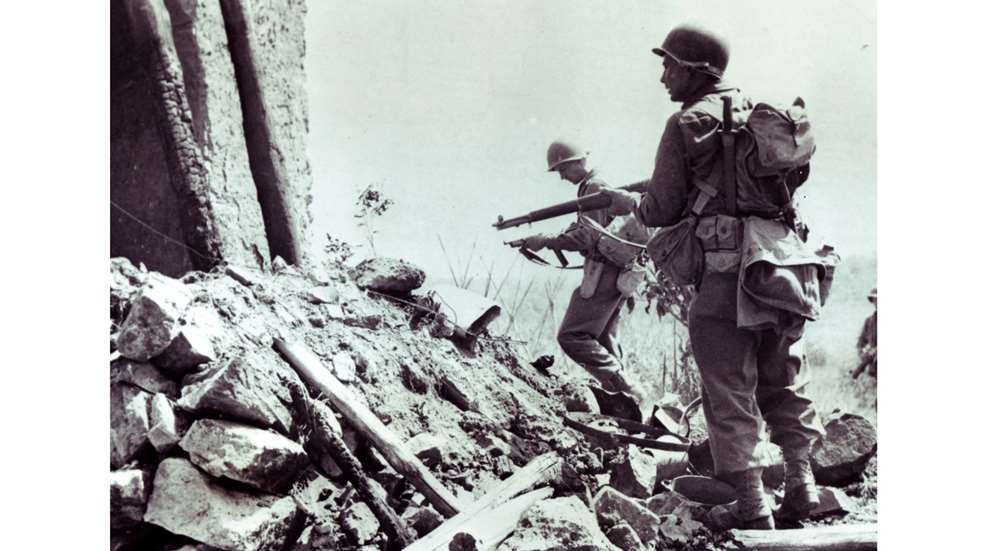
As important as it was, the Allied campaign in Italy during World War II is often overlooked by contemporary historians. From the invasion of Italy at Salerno in early September 1943, and continuing through June 1944, the advances in the rugged Italian mountains were the “second front” that the western Allies had promised to execute in order to take pressure off the Soviets.
Winston Churchill had initially described Italy as “the soft underbelly” of Europe. After months of an uphill slog against well-entrenched Germans, U.S. Lt. Gen. Mark Clark described Italy as a “tough old gut,” where the defenders held most of the advantages. After the Allied landings in Normandy, the Italian campaign was rarely featured in newspaper headlines. Even so, the lessons learned by U.S. troops fighting in Italy were put to good use in the later fighting in France.
While American infantry small arms were the finest created during World War II, the road to victory over Germany was built on the ingenuity and tactical innovations of the GIs. An in-depth report on the fighting in the Italian campaign was prepared shortly after the war by “Headquarters 15, G-3 Section,” of Army Group Italy. The following excerpts from that report provide an account of American infantry firepower in Italy from 1943-1945, in the words of the troops themselves.
Use Of .50 Cal Machine Guns
Most of the firing was indirect and at night. Targets selected were usually supply trails, avenues of approach, probable assembly areas, and the immediate vicinity of buildings used by the enemy or believed to be occupied. These targets were usually located from ground OP's, maps, aerial photos, and from POW information. Supply and communication routes were sprayed continuously during the night by short bursts from different guns. POW reports indicated that Germans were considerably harassed by this type of fire since they could not tell when, or from where it was coming. In some instances the 50 caliber guns were used very effectively to fire directly into the openings of caves in cliffs.
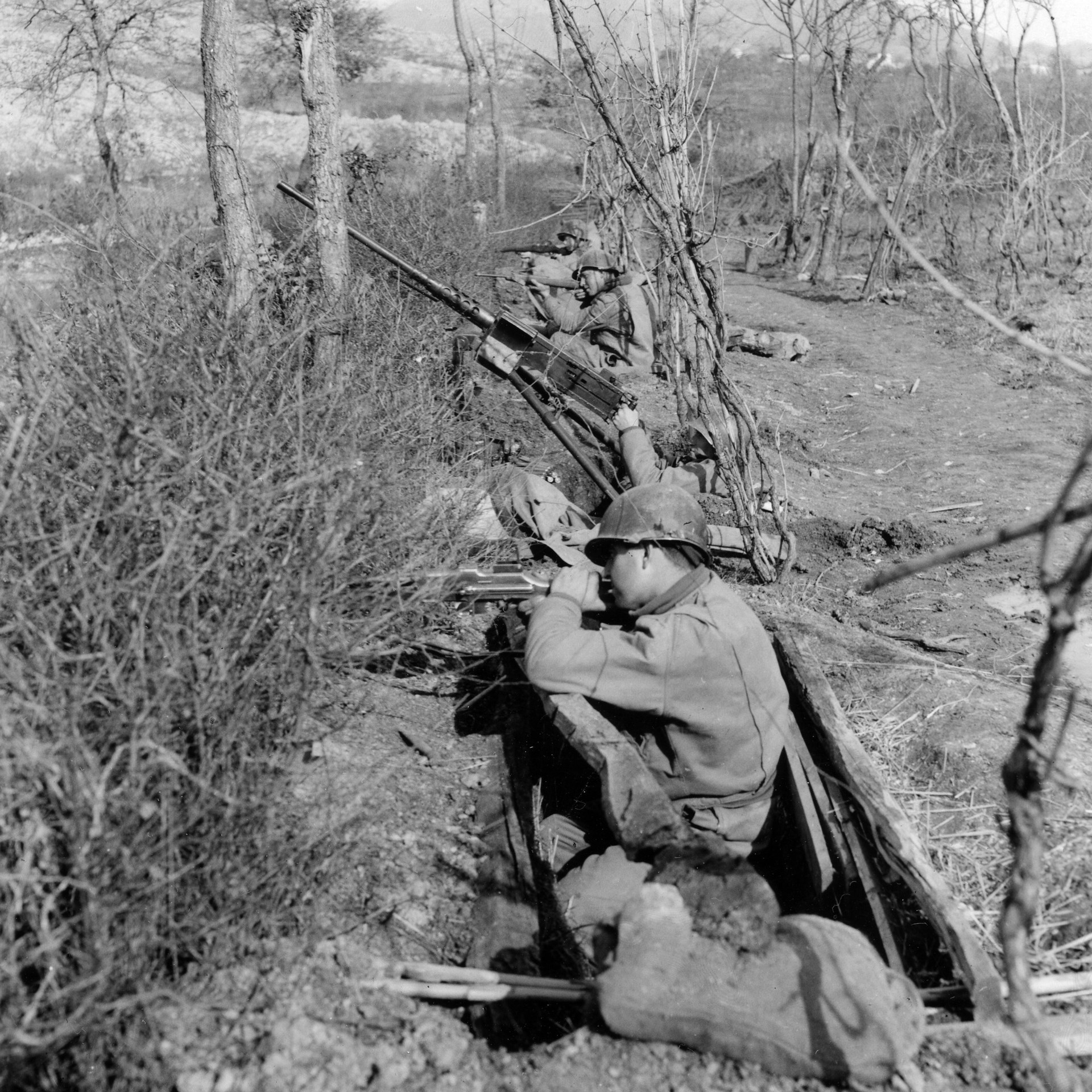 Indirect fire with the Browning M2 .50-cal. machine gun: At the River Rapido, February 1944.
Indirect fire with the Browning M2 .50-cal. machine gun: At the River Rapido, February 1944.
The use of the .50 Cal. guns in harassing the enemy proved very effective in that it restricted his movements on trails and roads and prevented him from supplying his troops with ease or security. In some instances MGs were placed in the second story of a building away from the door or window and sandbags used to give them a firm base. A blanket or burlap was used to screen the opening so that the smoke and flash would not disclose the gun position. Range cards were accurately prepared for each MG position, and each key man had a copy.
Browning .30 Caliber Machine Gun Fire
Light MGs delivered most of the short and some medium range fire, and were mostly used on the frontline. They were used to cover avenues of approach during defensive periods, or during periods of reorganization in the offensive. They were also used in establishing a base of fire for maneuvering riflemen.
Most of the medium range firing was done in connection with offensive movements. The normal use of medium range fire was to cover the flanks and to place fire on probable enemy positions, while the riflemen maneuvered to assault these positions.
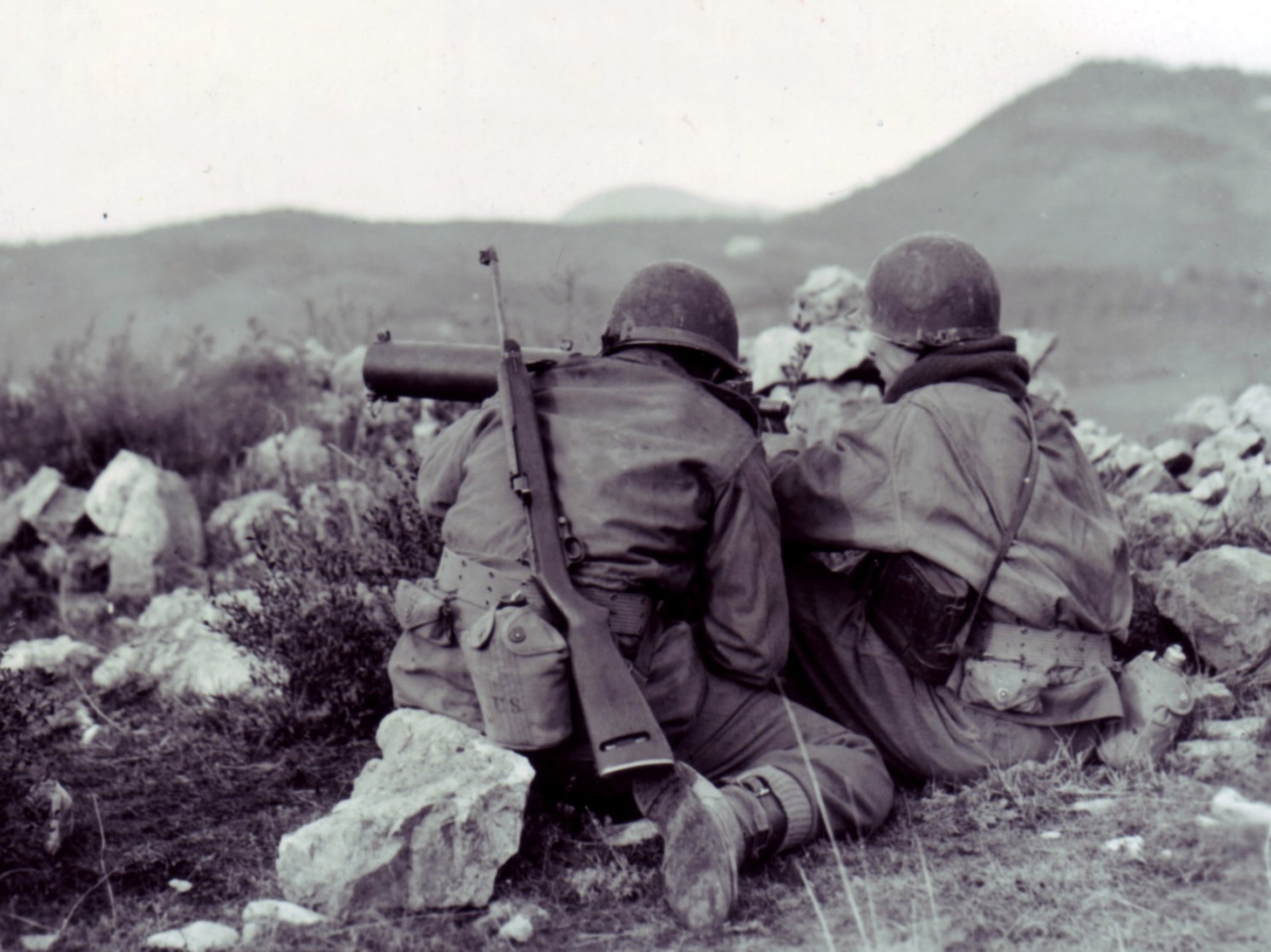 The Browning M1917A1 .30-cal. machine gun in action near Filetole. Note the assistant gunner is armed with an M1 carbine.
The Browning M1917A1 .30-cal. machine gun in action near Filetole. Note the assistant gunner is armed with an M1 carbine.
Long range MG fires were generally used in the defense for harassing missions, the targets being road junctions, trails, supply routes and probable assembly areas. These fires were usually delivered at night. In a few instances during the offensive, on terrain covered with thick under brush, HMGs were used to deliver long range harassing fires. This was done since, due to the undergrowth, no targets for these weapons presented themselves, close to the front line. This fire was placed on probable routes of withdrawal' and on routes of supply.
Very little indirect firing except harassing was done with the .30 caliber HMG. Due to the rugged terrain our guns almost invariably could be placed in positions from which direct fire could be delivered, or which afforded partial defilade.
The Heavy MG Cal .30 Compared To The LMG Cal .30 (*The Browning M1917 compared to the Browning M1919A6)
In fast-moving situations the LMG is considered the better weapon because of its maneuverability and lighter weight. More ammunition can be carried by its crew, and it has been found that fire is never sustained long enough to injure the barrel.
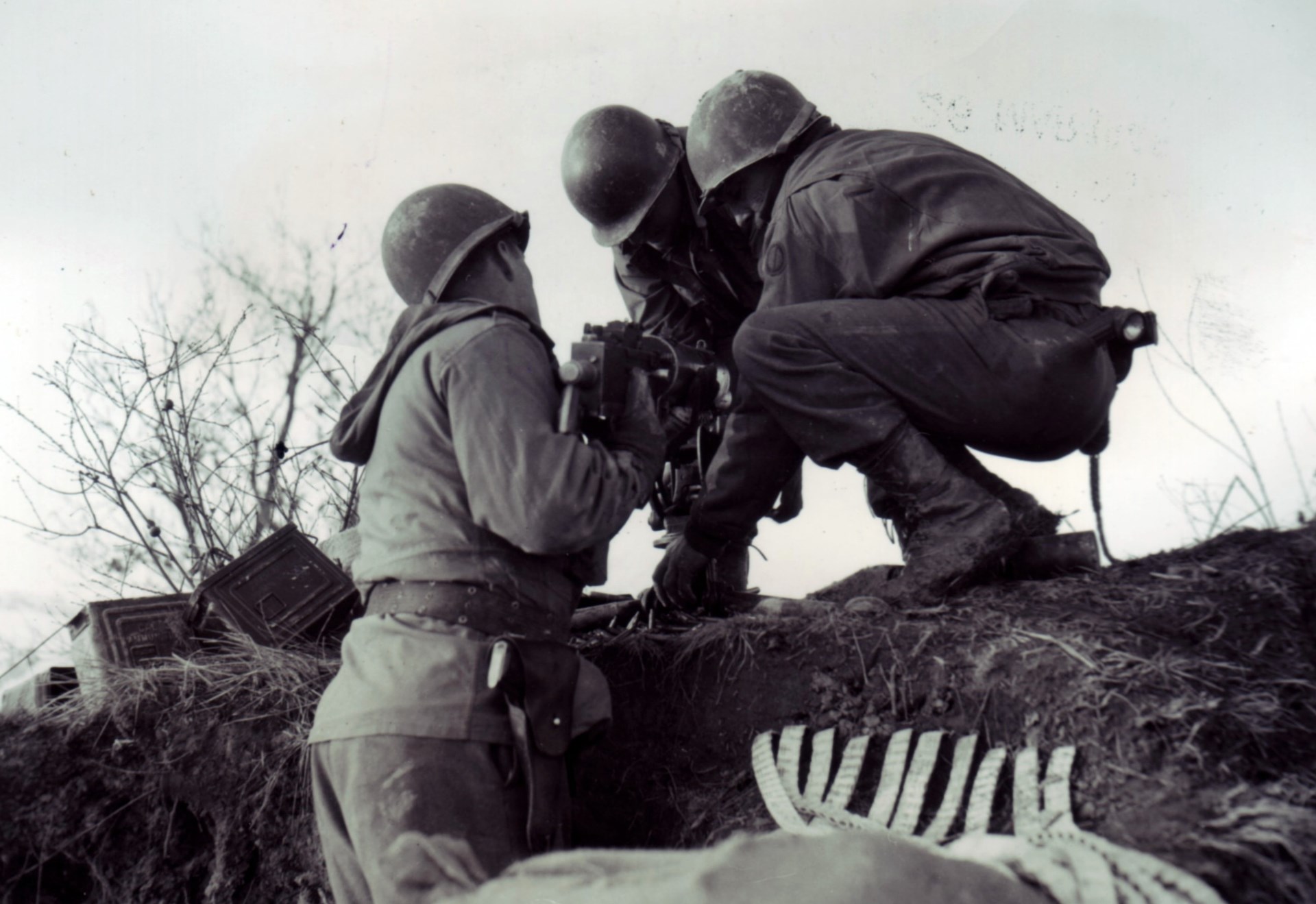 Moving a complete M1917 machine gun, the "heavy Browning," took several men to carry the 100+ lb. combination of the gun (with water), tripod and basic load of ammunition.
Moving a complete M1917 machine gun, the "heavy Browning," took several men to carry the 100+ lb. combination of the gun (with water), tripod and basic load of ammunition.
The HMG has proven its value in defensive situations and for overhead fire. Rifle company commanders preferred the addition of one LMG, and the dropping of one 60mm mortar in the weapons platoon, since normally only two 60mm mortars were used. They also favored an increase in personnel of the LMG squad to provide additional ammunition supply and to provide replacements for the LMG squad casualties which were heavy.
The following modifications to the LMG were found desirable:
- A modification on the front barrel bushing. This device did not lock securely enough and was too easily lost. By the addition of two small link chains on either side of the bushing, which will fasten by insert pin on to the bipod or jacket, the bushing will always be secure. Loss of this bushing is a serious matter as the gun will not fire automatically without it.
- Adoption of metal or plastic link-type ammunition belt. The cloth belt was highly unsatisfactory when exposed to wet weather. The resultant swelling of the cloth did not permit smooth feeding and automatic fire.
- Adoption of the German principle for change-over of the barrel; the German method is smoother, faster and easier.
The BAR
The BAR has proved an excellent weapon and needs no modification. There were no complaints as to its mechanical functioning and very few stoppages were reported. Most officers suggested adding 6 more BARs to the Company without adding to the number of magazines per BAR team.
Many suggested leaving off the bipod to save weight, figuring that in a defensive situation, when the bipod is of greatest value, machine guns (lights or heavies) could be brought up to provide defensive fire. The LMG with bipod and shoulder rest was considered excellent but should not replace the BAR, whose firepower is ample if handled by a man who really knows how to use it. The BAR was unanimously acknowledged to be the backbone of the infantry squad.
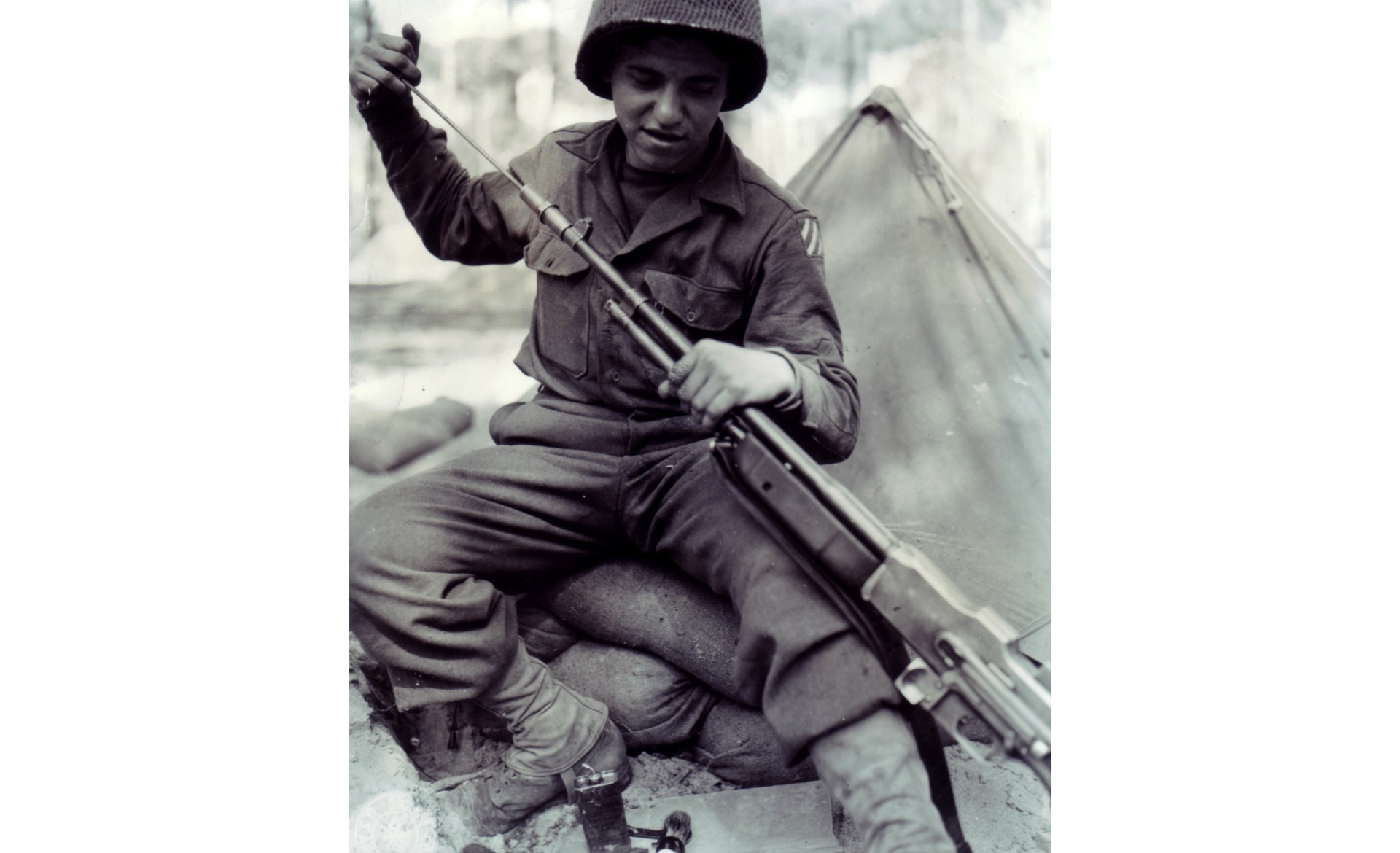 BAR cleaning at the Nettuno beachhead, April 1944.
BAR cleaning at the Nettuno beachhead, April 1944.
Related experiences of junior officers and NCOs indicated that the Germans also held this view. In all infantry engagements the enemy constantly gave priority attention to the BAR in the squad. The BAR was credited with the disruption of many enemy counterattacks. Consequently, our present BAR and LMG with bipods and shoulder stock attachments are considered highly satisfactory. Here again as with other weapons, the need of a flash-less and smokeless powder is paramount.
The M1 Carbine, Submachine guns, And The M1911 Pistol
The Carbine, cal. 30, proved to be an excellent weapon for firing at short ranges. Its modified sight which permits changes in range and deflection greatly increased its accuracy. Most small unit leaders who were at times drawn into a fire fight preferred the carbine to the automatic pistol because of its accuracy and longer range; they usually preferred it to the SMG because of its lesser weight.
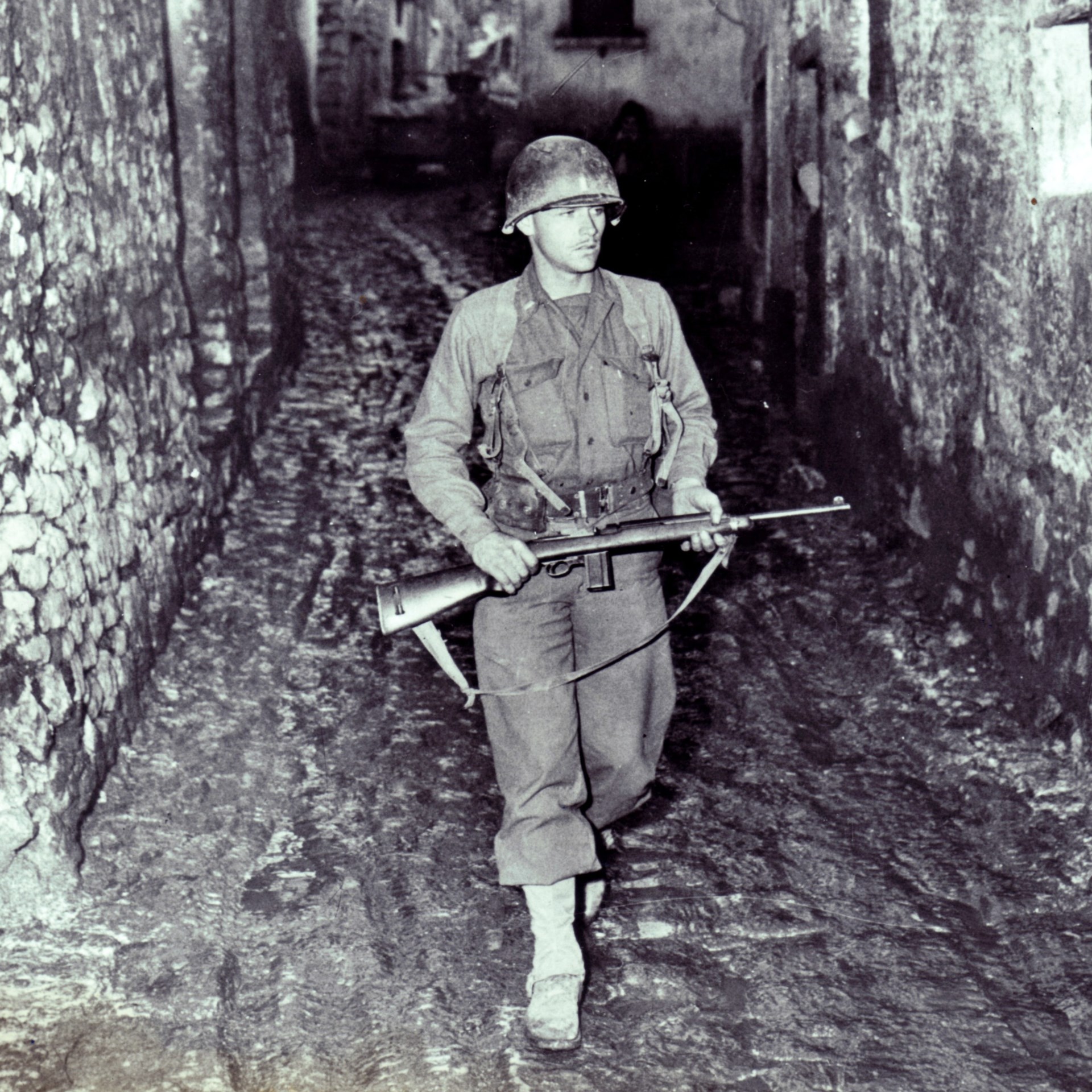
The SMG proved to be invaluable in fighting in areas covered by dense foliage, in village and street fighting, in clearing out houses, and for use on patrols. Though its range is limited, its great volume of automatic fire made it an excellent weapon for covering small areas where the targets were indistinct or fleeting. Its large volume of fire, delivered at close range, had a great demoralizing effect on the enemy.
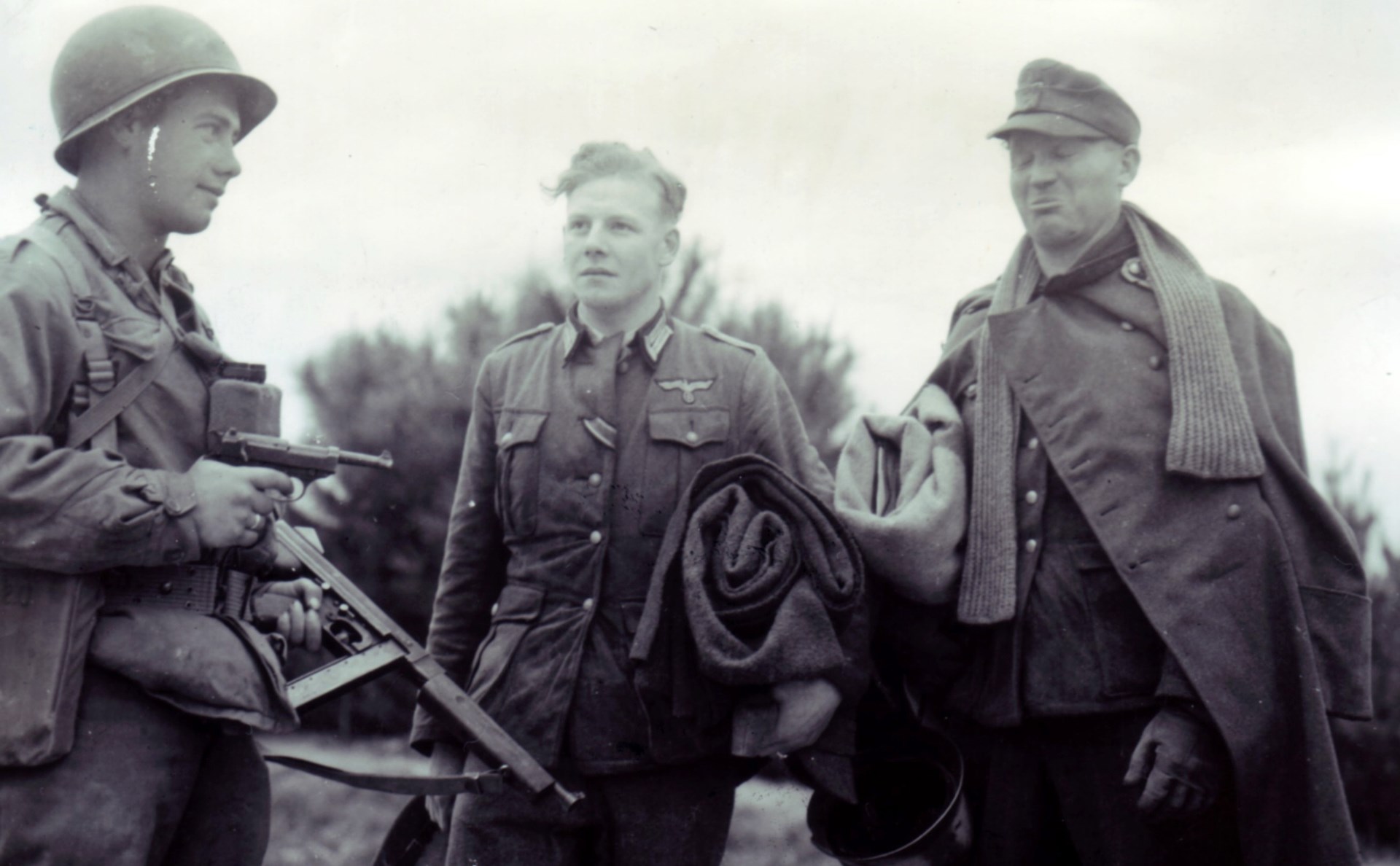 The Thompson SMG with German prisoners—near Littorio, Italy, April 1944.
The Thompson SMG with German prisoners—near Littorio, Italy, April 1944.
The automatic pistol, cal. 45, proved to be a good weapon for the purpose for which it was intended—personal protection against an enemy at close range. It is not considered to be a suitable weapon for leaders of small infantry rifle units. However it was the opinion of most infantrymen that men armed with the rocket launcher, men in MG and mortar crews, radio operators, and wire crews should be armed with the pistol. A carbine or rifle hampers these men in their movements and in the handling of their primary weapons or equipment.
A pistol is believed to be sufficient for their self protection, and allows them greater freedom of movement.
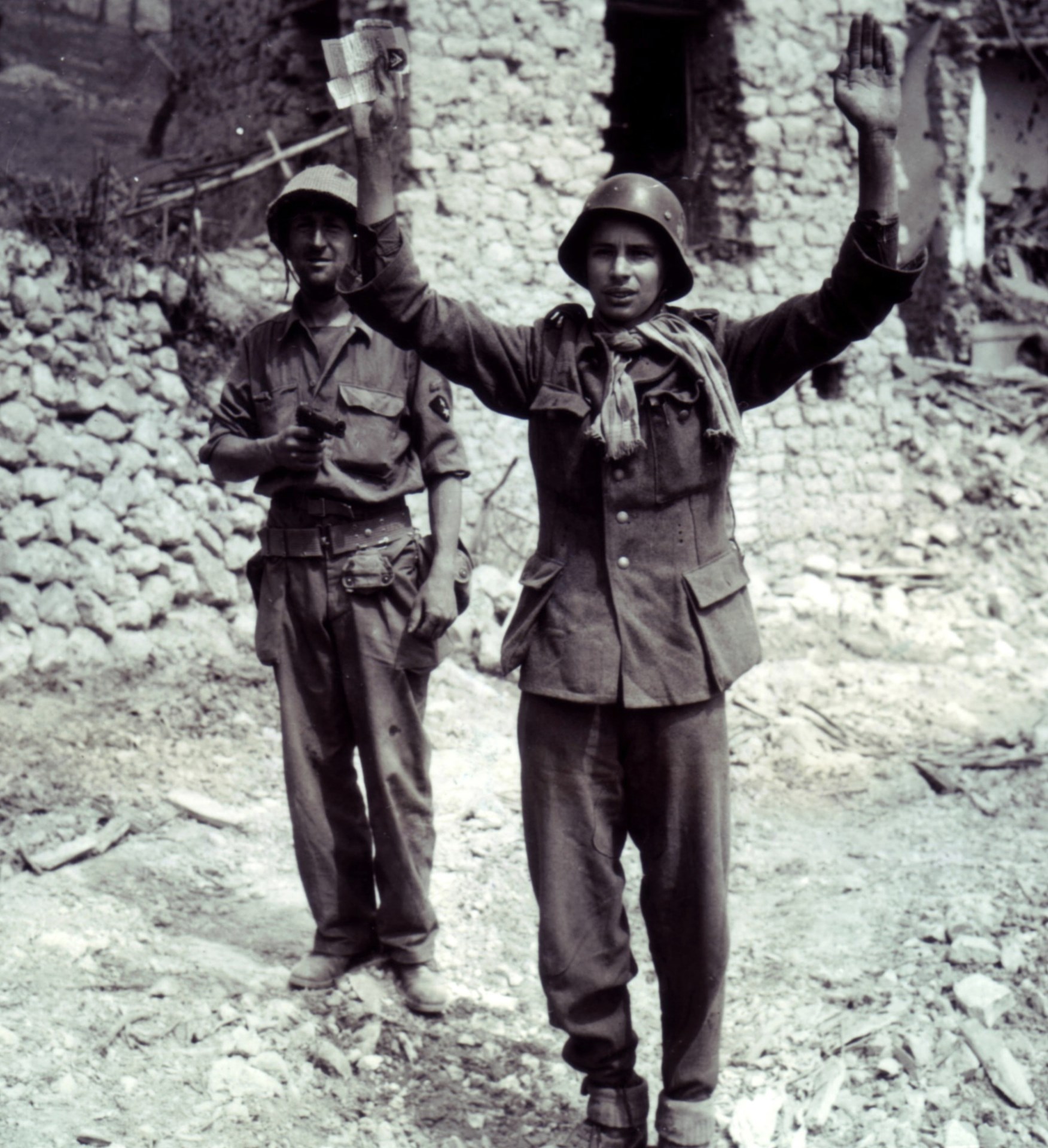 Army soldier bringing in a prisoner at pistol-point with the M1911, Castelforte, Italy during May 1944.
Army soldier bringing in a prisoner at pistol-point with the M1911, Castelforte, Italy during May 1944.
Use Of The Bayonet
The bayonet was rarely used in the Italian campaign, and many men disposed of them during advances. In the few instances where bayonet assaults were carried out, they were successful and completely demoralized the enemy. Our troops always preferred to shoot, and it was seldom that close enough fighting was encountered so that the bayonet could be used.
Grenades
Grenades were used extensively by all infantry units with excellent results. The fragmentation hand grenades were very effective for close-in fighting, for stopping hostile assaults, mopping up pill boxes and MG positions, and for clearing houses. In the attack and on patrols, infantry soldiers habitually carried at least two fragmentation hand grenades. The fragmentation rifle grenade was also very effective, and, with a little training, soldiers became very accurate in its use. It was used against groups of personnel in the open, against MG positions, and in clearing houses by firing through open doorways and windows. Frequently it was used in conjunction with AT grenades in attacking occupied houses; AT grenades were fired through doors or windows and the rifle grenades fired close to the house to inflict casualties as the occupants came out.
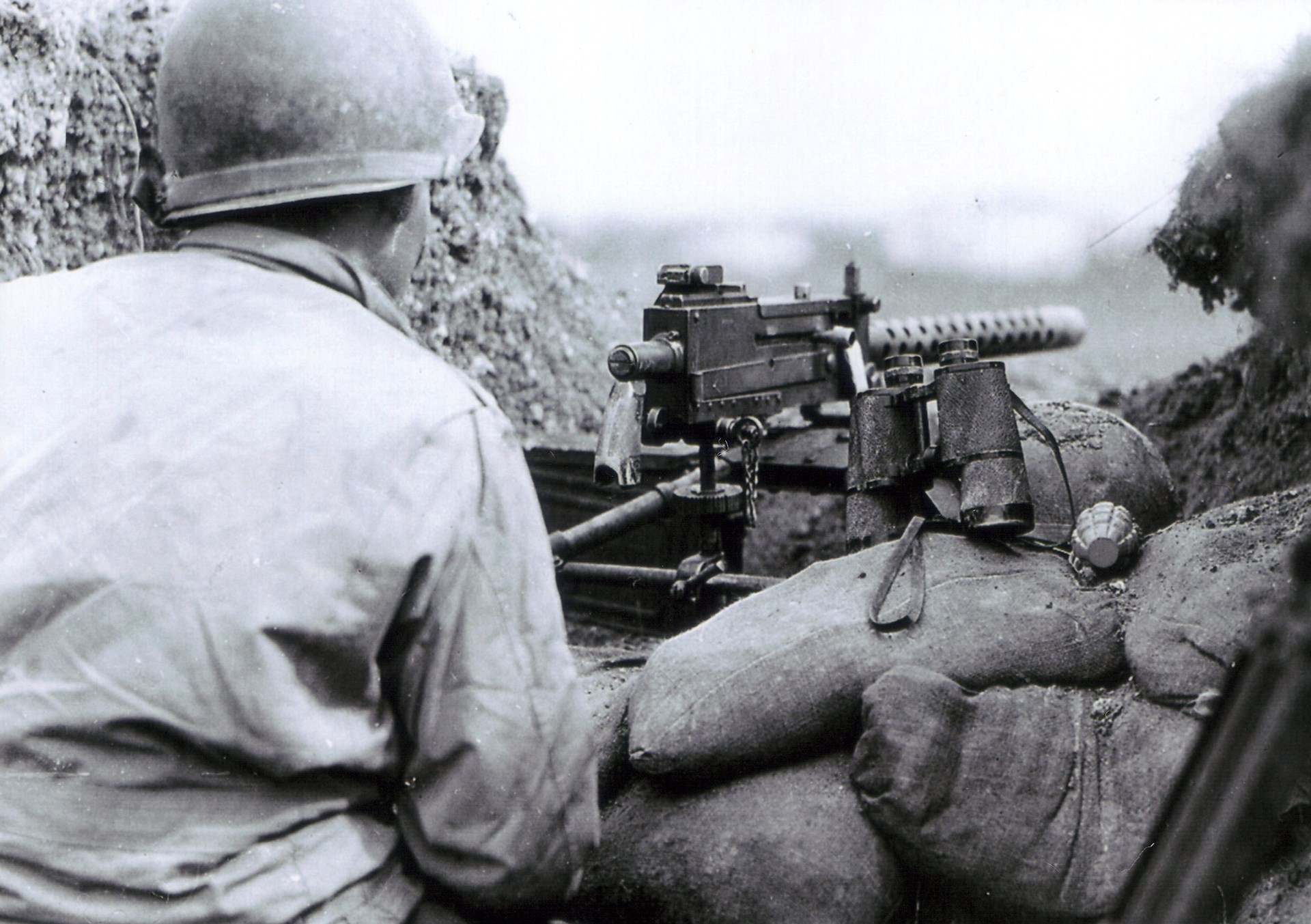 The Browning M1919A4 .30-cal. machine gun in position near Anzio during early 1944. Note the binoculars and grenade at the ready.
The Browning M1919A4 .30-cal. machine gun in position near Anzio during early 1944. Note the binoculars and grenade at the ready.
The AT grenade was effectively used against armored vehicles, pill boxes, houses, and dug in gun positions. This grenade had a terrific concussion effect as well as "penetrating power”. In one instance the use of AT grenades broke up a three tank attack on a company position at a time when artillery support was not available. In another instance a light tank was knocked out and the crew killed by' hits from two AT grenades.
The smoke (WP) grenade was very effective in clearing the enemy from caves and dugouts, where at times fragmentation grenades would not do the job. On occasions they were used as incendiaries. Some preferred the WP grenade to the fragmentation grenade for general use.
The offensive grenade was used very little when fragmentation grenades were available. Troops found the fragmentation grenade could do the same job as the offensive grenade, and do it better.
Assault Team Weapons
Assault teams armed with the rifle, the BAR, and the Bazooka were employed to a great extent against fortified houses and dugouts. The BAR formed the nucleus of the team. It was usually employed with a few riflemen as a base of fire, while the building was being investigated. The bazooka rocket had little effect on thick stone or concrete walls but was very effective through doors and windows. In many instances the anti-tank grenade -was used effectively in the same manner.
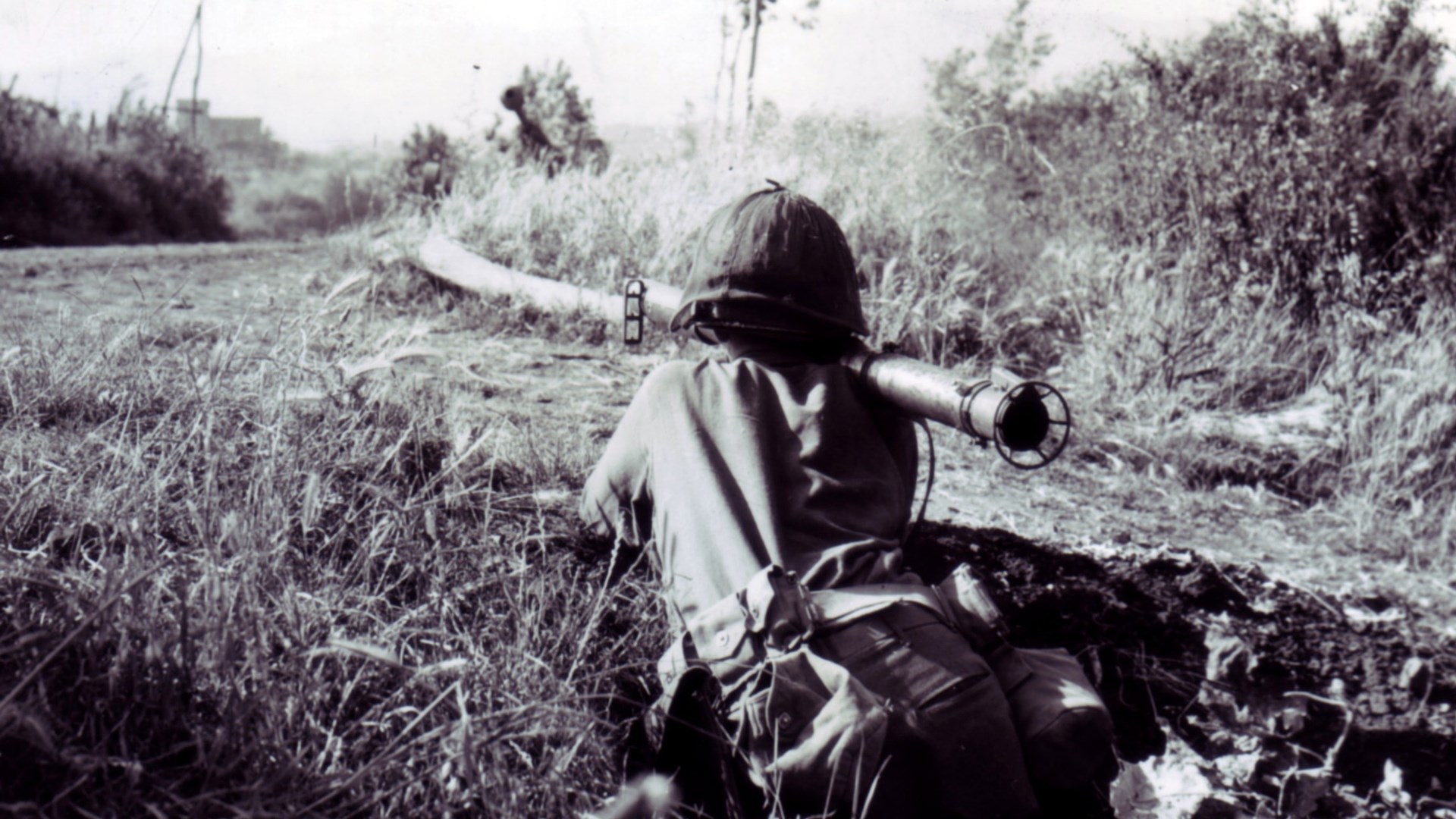 The 2.36" Bazooka, in use with the 36th Infantry Division at Velletri, Italy during May 1944.
The 2.36" Bazooka, in use with the 36th Infantry Division at Velletri, Italy during May 1944.
The flame thrower was seldom used as an additional weapon in such assault teams. It was found that they were not essential in attacking houses since the Bazooka rocket or the anti-tank grenade fired through the door or window of a house usually sufficed. The flamethrower, however, was used to great advantage in assaulting pillboxes or well-protected dugouts, since the bazooka rocket or the anti-tank grenade failed to penetrate their reinforced walls.
One reason for not using the flamethrower to a great extent was the lack of specialist operators. To operate it successfully in combat the soldiers must be proficient with the weapon and be able to keep it in proper adjustment. It was generally believed that these specialists should come from combat engineer units, and should be made available to, the infantry when needed.
“Marching Fire”
The mountainous terrain afforded very few opportunities for marching fire. Objectives were often a considerable distance apart and separated by deep ravines. It was often necessary for advances to be made in single file and a platoon front was, seldom possible. Much of the Italian terrain consisted of extremely steep slopes, rocky or terraced, where a swift advance was impossible.
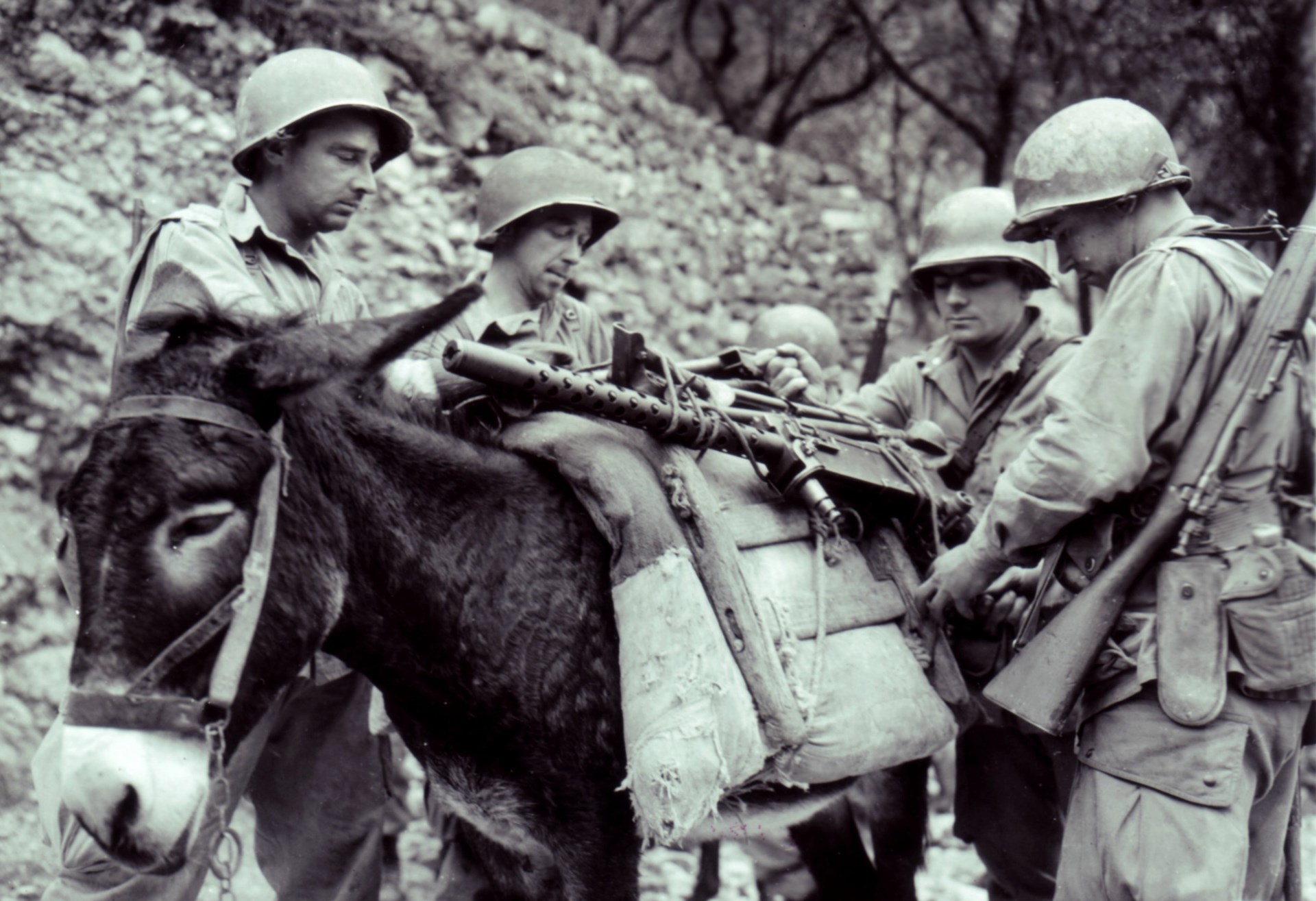 A Browning M1919A4 strapped to the GIs most effective form of transport in the Italian mountains. Note that the muleskinner at right is armed with an M1903 Springfield rifle—commonly found in Italy until well into 1944. Photograph taken in Venafro, Italy, December 1943.
A Browning M1919A4 strapped to the GIs most effective form of transport in the Italian mountains. Note that the muleskinner at right is armed with an M1903 Springfield rifle—commonly found in Italy until well into 1944. Photograph taken in Venafro, Italy, December 1943.
The enemy usually occupied positions that were well selected, dug in and camouflaged, and his exact location was extremely difficult to determine. A slow advance strongly supported by fire was found necessary under these conditions.
When attacking down ridge lines, over reasonably open terrain or on hills easily accessible to foot troops, assault fire was used very effectively, by our troops. Commanders and troops alike favored its use where conditions warranted. Casualties inflicted by enemy small arms fire were not as severe when assault fire was used in the attack as they were when other methods of advance were employed. The issue of additional ammunition for these assault fire engagements was not found necessary.
Comparing .30 Caliber AP And Ball Ammunition
Both AP and ball caliber .30 ammunition were very effective when employed on targets for which they were designed. The armor-penetrating quality of AP ammunition was desirable during the period the enemy was employing numerous light vehicles and strafing planes. During that period frontline leaders requested an increase in AP ammunition. Both AP and ball ammunition were carried.
Ordnance reports indicated the following comparison between AP and ball ammunition:
- AP ammunition was not as effective against personnel as ball ammunition in that it did not have the same splattering effect. AP ammunition made a clean hole through flesh and bone, whereas ball ammunition frequently ricocheted from heavy bones and caused greater tissue damage.
- AP caused more damage to the bores of rifles and MGs, than did ball ammunition.
- Ballistic qualities of AP and ball ammunition up to medium range were practically the same.
- AP ammunition was more effective against lightly armored vehicles.
The use of a single type of ammunition (AP) was preferable to using both types, and after the fall of 1943 only AP was shipped to the theater. However, both ball and AP were used thereafter to utilize existing stocks of ball ammunition.
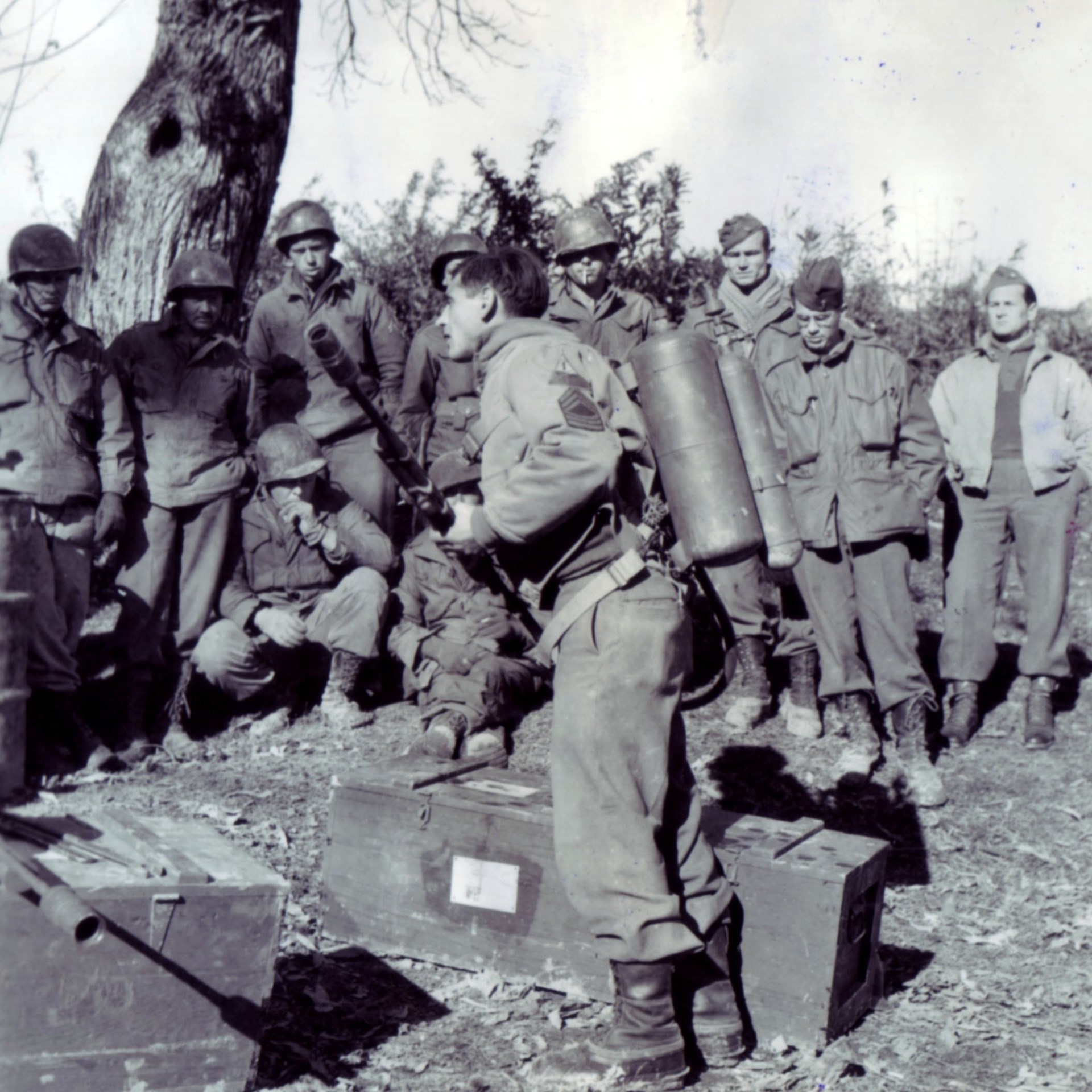 Demonstrating the M1A1 flamethrower in Italy during November 1944. Detailed training with the finicky flamethrower was critical to their success in combat.
Demonstrating the M1A1 flamethrower in Italy during November 1944. Detailed training with the finicky flamethrower was critical to their success in combat.
Machine guns, at positions difficult to resupply, maintained a supply of 25,000 rounds per section of heavy machine guns, and 20,000 rounds per section of light guns. In positions more easily resupplied, 12,000 rounds per section for both the light and heavy machine guns were usually maintained.
Positions that were supplied by mule train experienced a great deal of difficulty in protecting machine gun ammunition from the weather. On long hauls, mules could not carry a case
(1,250 round.) on each side so the cases were opened and split, thus exposing the ammunition to the weather. It was also impossible to keep moisture away from ammunition stored in positions. Belts became wet and ammunition, corroded so that it could not be used. A constant resupply was necessary to replace ammunition rendered unserviceable by the weather.
Training All Combat Infantrymen In The Use Of All Infantry Weapons
It was found in combat operations that men lacked sufficient knowledge of weapons other than the one with which they were armed. In particular, a general lack of familiarity with the Bazooka, rifle grenade and BAR was prevalent. On occasions squads were without a BAR due to casualties, and the lack of ability of other members of the squad to take over and man the weapon.
Some unit commanders felt that in a rifle company, the men of a platoon should be trained only in the weapons (both crew served and individual) of that particular type of platoon. Their argument was based on their experience that rarely did they transfer personnel from a weapons platoon to a rifle platoon and vice versa.
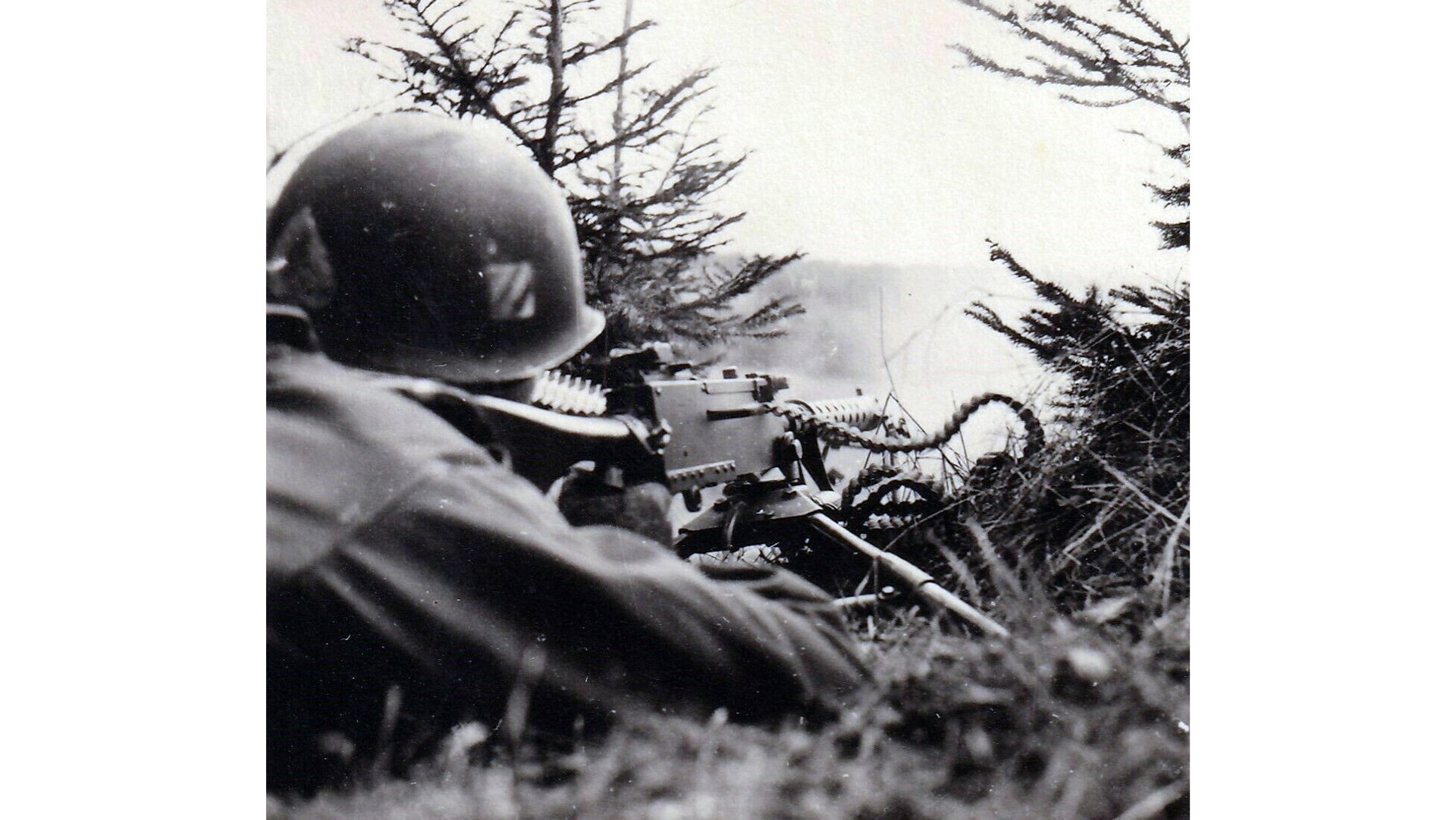 The Browning M1919A6 machine gun (on an M2 tripod) in action with the 3rd Infantry Division in Italy during 1945. Image courtesy of The General George Patton Museum.
The Browning M1919A6 machine gun (on an M2 tripod) in action with the 3rd Infantry Division in Italy during 1945. Image courtesy of The General George Patton Museum.
Others felt that all personnel in a rifle company should receive training in all weapons of the company in their experience, due to numerous casualties in their weapons platoons, it was necessary at times to use rifle platoon personnel to man crew-served weapons. Inasmuch as personnel had not been trained on crew-served weapons they could be used in the weapons platoon only as ammunition carriers. All agreed that transfers from the weapons platoon to rifle platoons were rare.
Marksmanship Training
Most officers and non-commissioned officers were satisfied that the training in marksmanship which our troops received was sound and practical. It made good shots of average soldiers and provided a sound foundation for firing on the transition range and for combat firing. They felt that this basic training in marksmanship was essential to give the soldier confidence in his rifle and in his own ability. Opinion was unanimous that more time and emphasis must be given to firing at field targets. It was also pointed out that although our training had made soldiers proficient at hitting targets that they could see, it had not emphasized the importance of, or the necessity for picking out and firing at probable targets in areas from which they were receiving enemy fire.
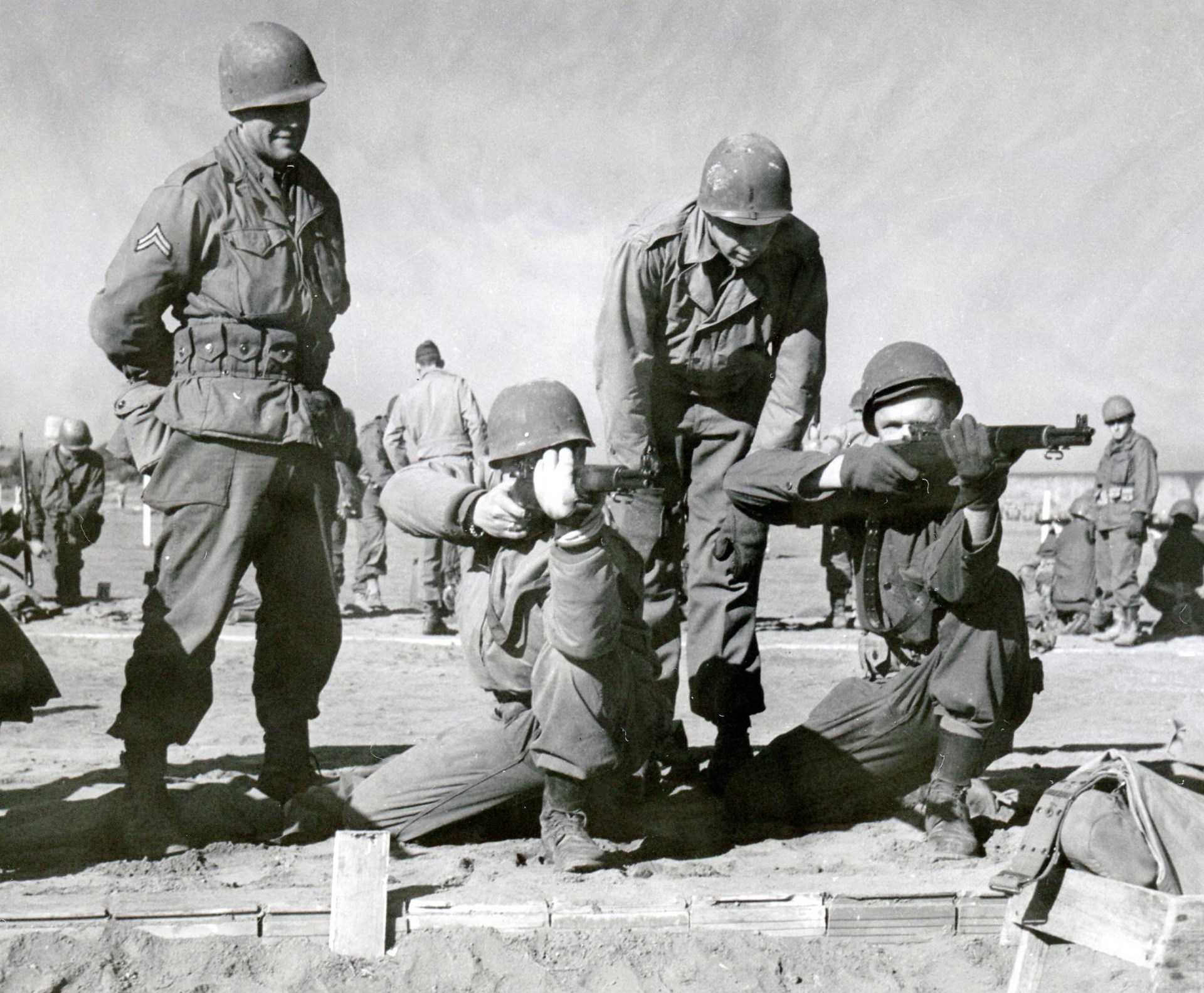 Advanced marksmanship training with standard infantry arms, particularly the M1 rifle, proved essential as replacement troops filled the ranks. Italy, spring 1945.
Advanced marksmanship training with standard infantry arms, particularly the M1 rifle, proved essential as replacement troops filled the ranks. Italy, spring 1945.
A Big GI Punch In The Gut
The campaign in Italy was an infantry war, and for most of the fighting up the Italian “boot,” the Germans held the high ground. There were few opportunities for an Allied end-around or an armored breakthrough or a tide-turning paratroop assault. Consequently, America had to rely on the quality of its infantry arms and the spirit of its fighting men.
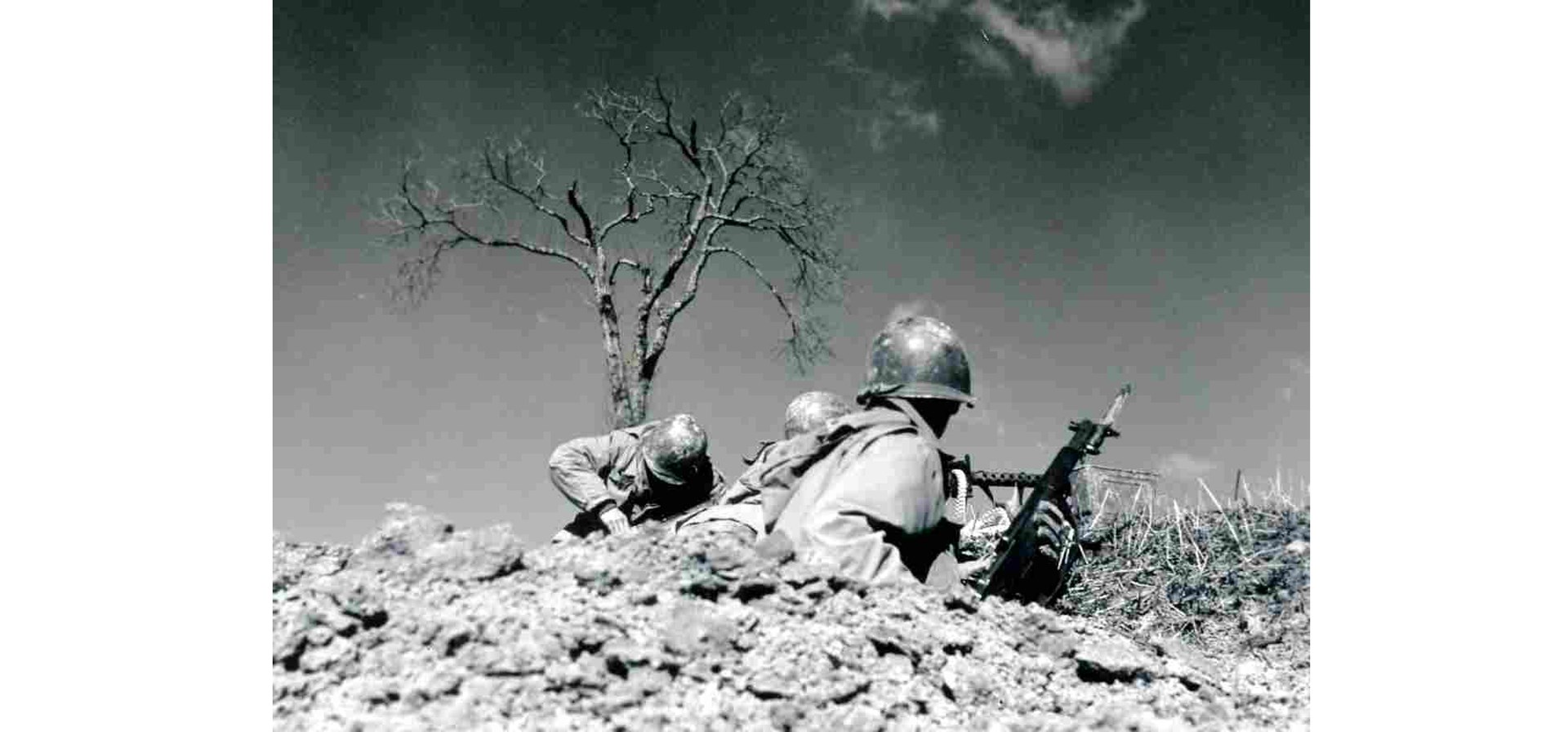 Use of the bayonet was rare, but when it was used, the positive effects on American morale and fighting spirit was highly valuable. With the 10th Mountain Division in Italy during early 1945.
Use of the bayonet was rare, but when it was used, the positive effects on American morale and fighting spirit was highly valuable. With the 10th Mountain Division in Italy during early 1945.
The 20-month fight on the Italian mainland cost nearly 120,000 American casualties. In the end, Germans troops were driven off one hilltop after another, slugged in the guts by an army that could climb higher, endure greater hardships and still shoot straighter.













